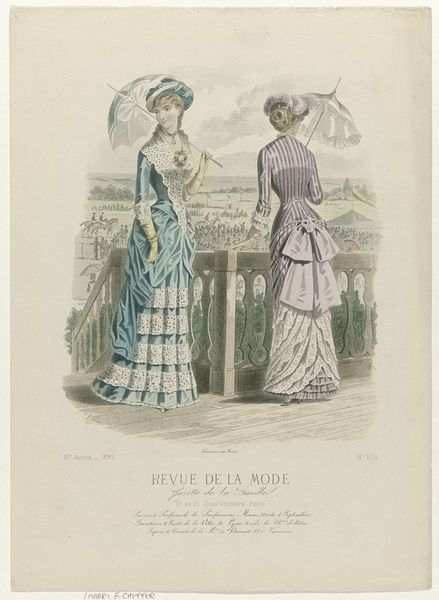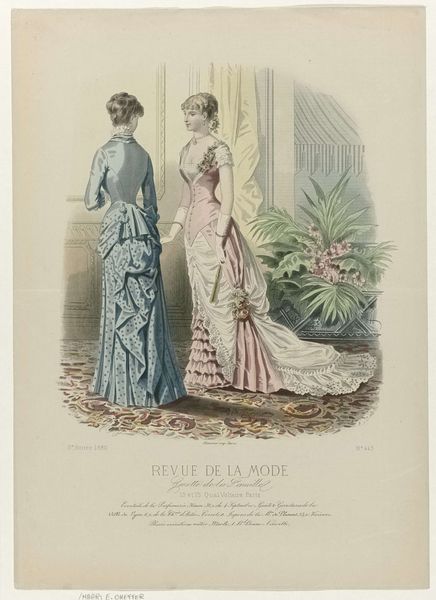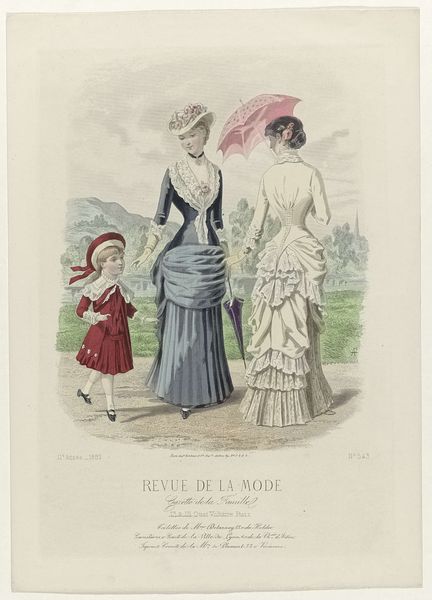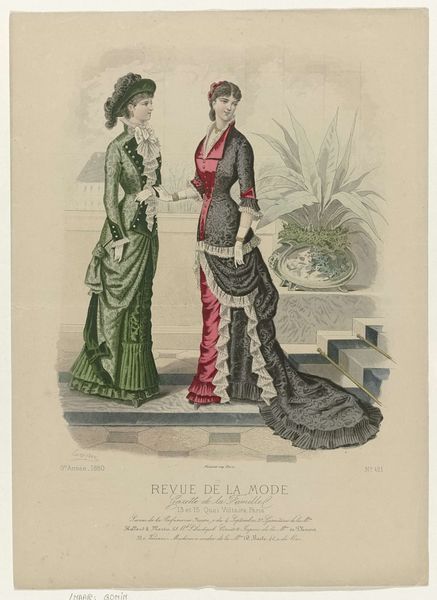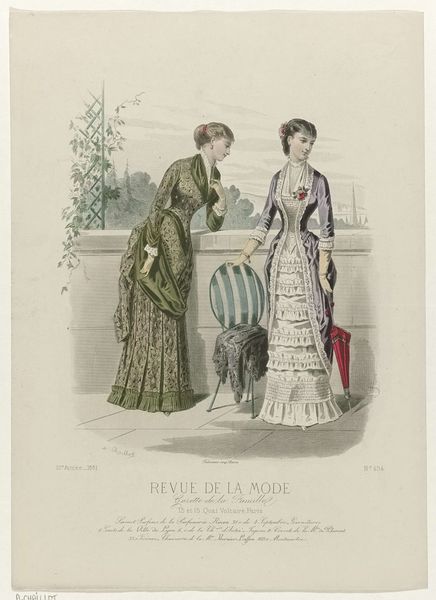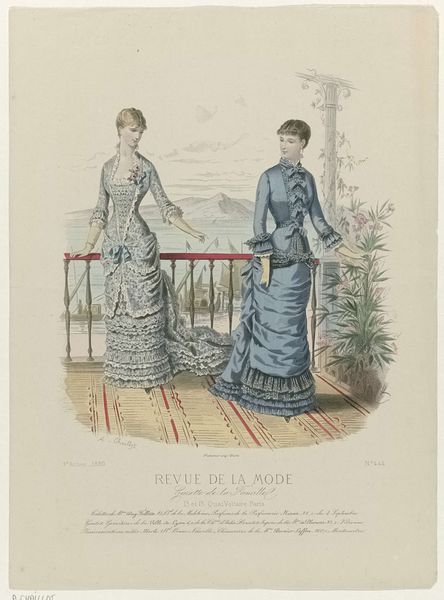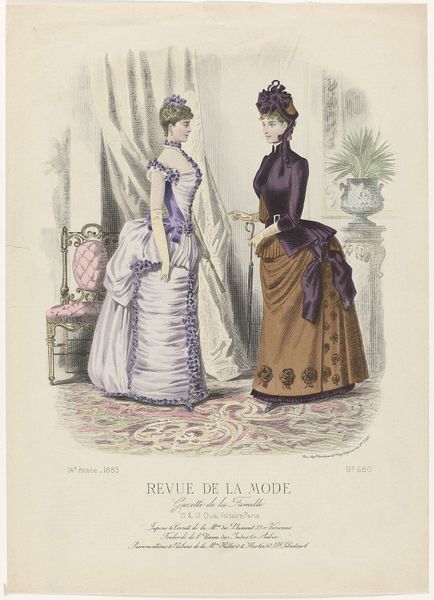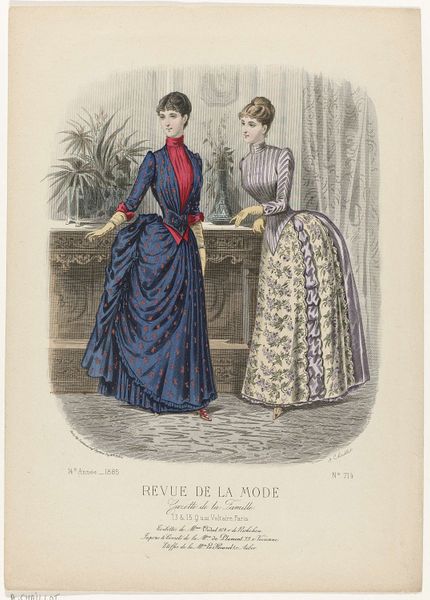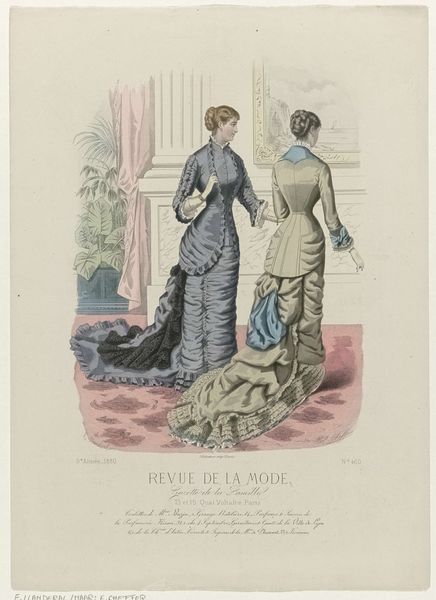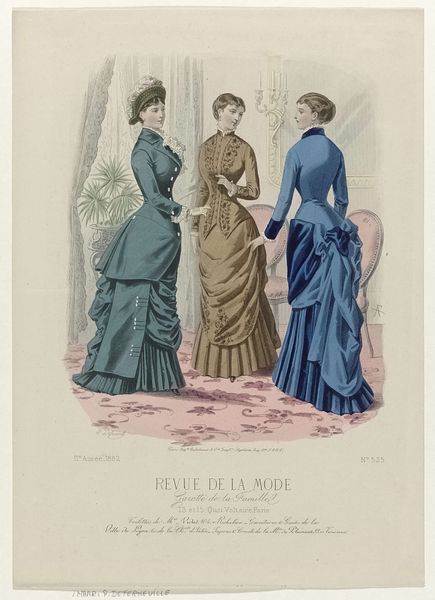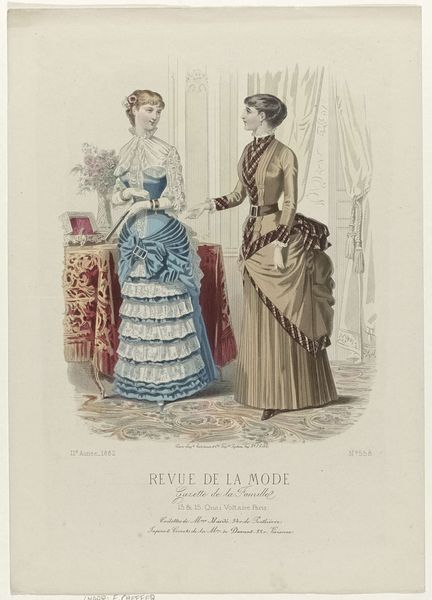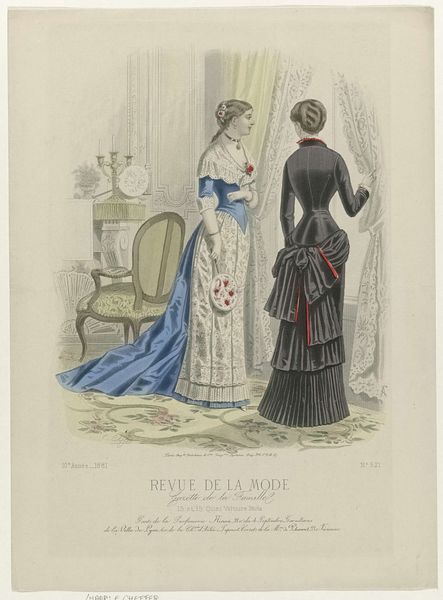
Revue de la Mode, Gazette de la Famille, dimanche 5 septembre 1880, 9e année, No. 453: Savons de la Parfumeri (...) 1880
0:00
0:00
Dimensions: height 370 mm, width 272 mm
Copyright: Rijks Museum: Open Domain
Editor: This is "Revue de la Mode, Gazette de la Famille" from 1880 by A. Chaillot. It's a print with ink and watercolour on paper, showcasing two women in elaborate dresses. I’m really struck by how much the clothing dictates their posture and presence. What’s your take on this piece? Curator: What I find fascinating here is the visual codification of femininity in late 19th-century France. Consider how the "Revue de la Mode" wasn't just displaying fashion, but actively constructing and reinforcing societal expectations around women's roles, appearance, and status. The very act of consuming this image, of desiring these clothes, became a participation in this system. Do you see any contradictions within this seemingly glamorous image? Editor: Well, it looks so opulent, but almost restrictive at the same time. All those layers seem so impractical! It almost feels like the women are being presented as commodities. Curator: Precisely! And who is this commodity for? The male gaze is implicit here, of course, but perhaps even more significantly, it's directed at other women. These images fuelled a culture of competitive consumption, where a woman's worth was, problematically, tied to her appearance and her ability to display wealth. We must also acknowledge that it created job opportunities and safe havens, while simultaneously propagating rigid class structures and harmful ideas about female beauty. It is hard not to see echoes of it even today. Editor: So it’s not just about pretty dresses; it's a commentary on societal pressure and female identity? Curator: Exactly. By understanding the historical and social context, we can read this seemingly innocent fashion plate as a complex visual text that reveals the intertwined forces of capitalism, patriarchy, and the construction of identity. What do you take away from that? Editor: It’s fascinating how much a seemingly simple fashion illustration can tell us about the complexities of gender, class, and consumer culture! I definitely see these types of tensions play out in magazines today too. Curator: Agreed. This artwork underscores that, at its best, art engages in dialogue, sparking reflection on broader intersectional narratives of identity, gender, race and politics.
Comments
No comments
Be the first to comment and join the conversation on the ultimate creative platform.
